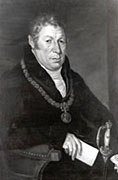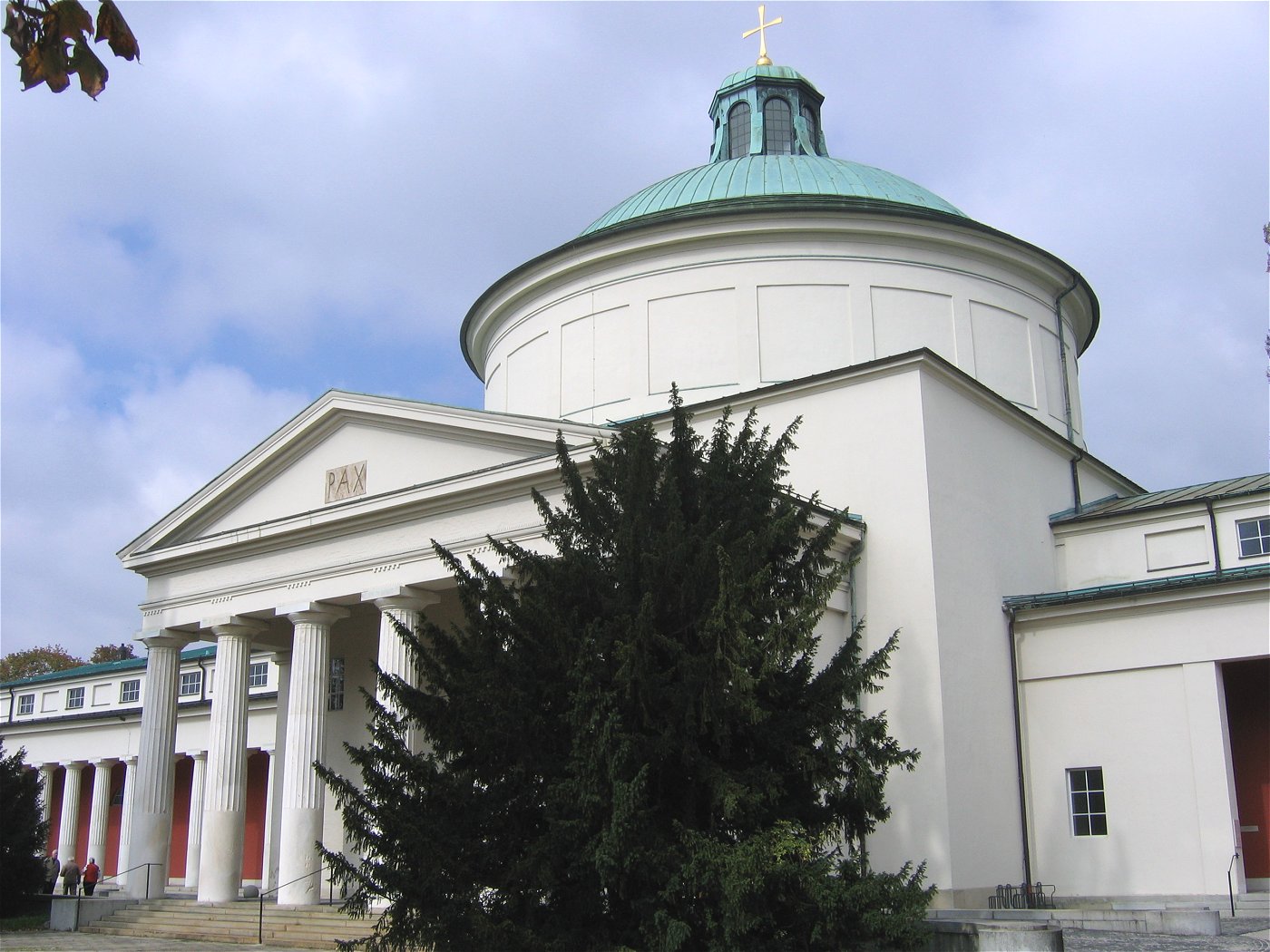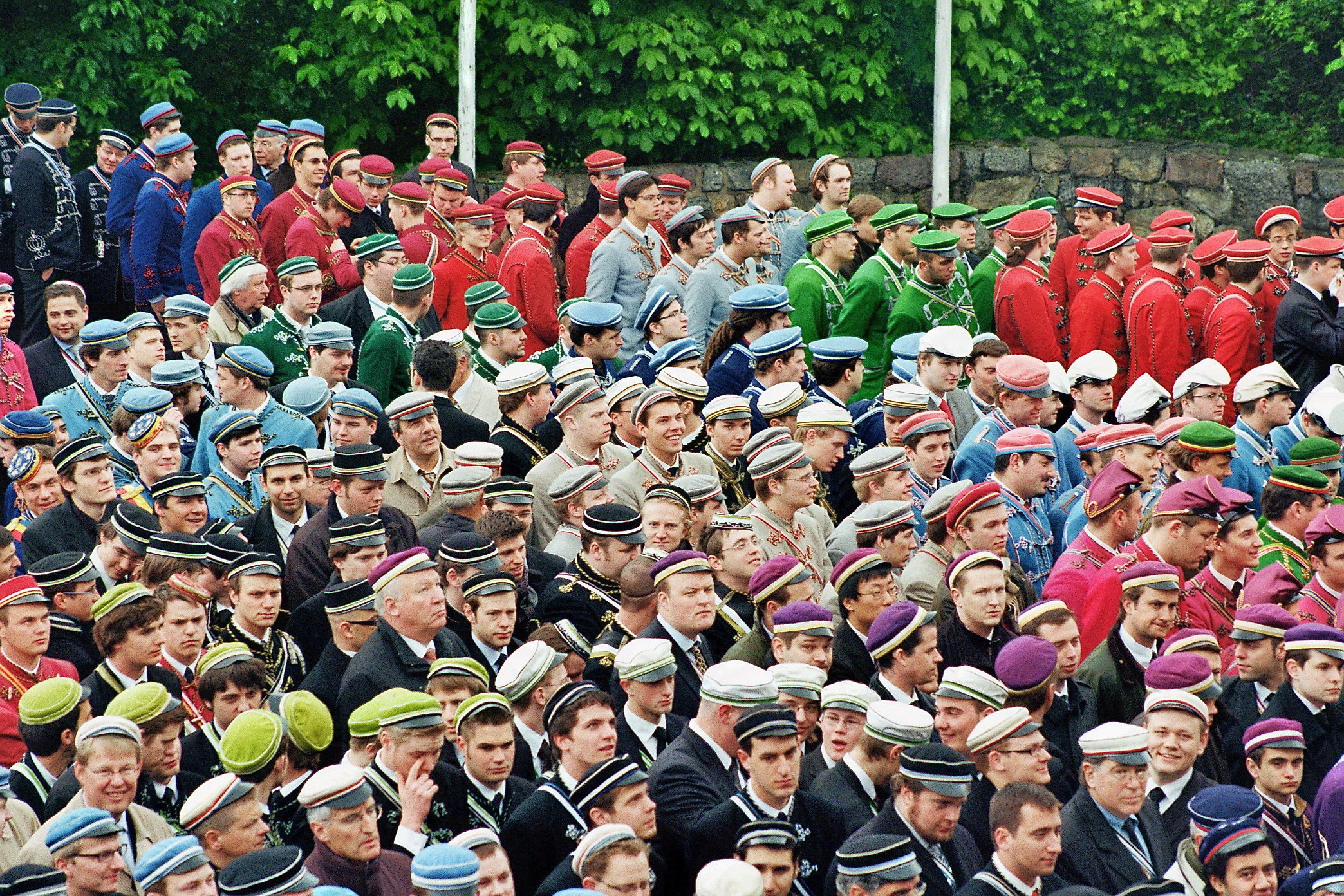|
Karl Scharnagl
Karl Scharnagl (born 17 January 1881 in Munich; died 6 April 1963 in Munich) was a German politician. He was Lord Mayor of Munich from 1925 to 1933 and again from 1945 to 1948, and in 1945 he co-founded the Christian Social Union in Bavaria (CSU). Life Scharnagl first learned bakery and confectionery trades in the family business, but showed interest in a political career at an early age. His brother Anton Scharnagl was a clergyman. In 1911, at just 30 years of age, he was a deputy of the Center Party in the second chamber of the Bavarian Parliament. In 1918, after breaking off from the Centre Party, he was a member of the Bavarian People's Party, where he was a member of Parliament through two election periods 1920–1924 and 1928–1932. In 1917, he was also in the select committee of the Bavarian Association of the German Fatherland Party. 1919 to 1945 In 1919, Scharnagl was elected to the city council of Munich, 1925 vice mayor and in 1926 he was elected mayor of the ci ... [...More Info...] [...Related Items...] OR: [Wikipedia] [Google] [Baidu] |
Bundesarchiv Bild 102-09043, Berlin, Bayerische Gesandte Bei Hindenburg
, type = Archive , seal = , seal_size = , seal_caption = , seal_alt = , logo = Bundesarchiv-Logo.svg , logo_size = , logo_caption = , logo_alt = , image = Bundesarchiv Koblenz.jpg , image_caption = The Federal Archives in Koblenz , image_alt = , formed = , preceding1 = , preceding2 = , dissolved = , superseding1 = , superseding2 = , agency_type = , jurisdiction = , status = Active , headquarters = PotsdamerStraße156075Koblenz , coordinates = , motto = , employees = , budget = million () , chief1_name = Michael Hollmann , chief1_position = President of the Federal Archives , chief2_name = Dr. Andrea Hänger , chief2_position ... [...More Info...] [...Related Items...] OR: [Wikipedia] [Google] [Baidu] |
Altstadtring
The Altstadtring is the innermost ring road of Munich, Bavaria, Germany. With the exception of the northwestern part, it runs roughly along the path of the former second wall of Munich and surrounds Munich's Altstadt. With the exception of the part between Isartor and Sendlinger Tor, it is mostly built with four or five lanes. Because of the loop solution, it is impossible to drive through the Altstadt by motor vehicle, and all motor traffic must use the Altstadtring. See also *Altstadtringtunnel Altstadtringtunnel is located in Maxvorstadt, Munich, Bavaria, Germany. See also *Altstadtring The Altstadtring is the innermost ring road of Munich, Bavaria, Germany. With the exception of the northwestern part, it runs roughly along the pa ... Streets in Munich Ring roads in Germany Maxvorstadt {{Bavaria-struct-stub ... [...More Info...] [...Related Items...] OR: [Wikipedia] [Google] [Baidu] |
Karl Fiehler
Karl Fiehler (31 August 1895 – 8 December 1969) was a German Nazi Party (NSDAP) official and Mayor of Munich from 1933 until 1945. He was an early member of the Nazi Party having joined in 1920. In 1933, he became a '' Reichsleiter'' in the party and was a member of the Reichstag. In March of 1933, he was appointed Mayor of Munich and held that post until the end of World War II in Europe. During his time as mayor, Fiehler was zealously anti-Semitic and saw to it that the Jewish population of the city was persecuted. After the war in January 1949, Fiehler was sentenced to two years in a labour camp, but the sentence was suspended given the previous three-and-a-half years of detention he had already served. Early life Fiehler was born in Braunschweig, German Empire. As a child, he attended a secondary modern school in Munich and afterwards he began a merchant apprenticeship, which he continued in Schleswig-Holstein in 1914. Fiehler served in World War I and was decorated with t ... [...More Info...] [...Related Items...] OR: [Wikipedia] [Google] [Baidu] |
Eduard Schmid
Eduard Schmid (born October 15, 1861 in Ostrach, Province of Hohenzollern, died 8 June 1933 in Munich) was Lord Mayor of Munich from 1919 to 1924. He was the first SPD politician to hold this position. Apprenticeship and work as an editor A joiner by trade, after his apprenticeship Schmid spent a few years as journeyman until he settled in Munich, where he became a member of the ' (German Wood Workers Association). He also worked as an editor for the SPD affiliated newspaper Münchener Post. Political career In 1899 Schmid became the first Social Democrat member of the City of Munich Magistrate. In 1907 he became member of the Second Chamber of the Bavarian Parliament. In a time of severe domestic disputes, a few weeks after the defeat of the Bavarian Council Republic, Schmid was elected to Lord Mayor of Munich on 26 June 1919, in which he became the first Social Democrat to hold the highest position in the city until 1924. Living conditions in Munich were determined at that ... [...More Info...] [...Related Items...] OR: [Wikipedia] [Google] [Baidu] |
Mayor Of Munich
This is a list of mayors of Munich since 1818. Kingdom of Bavaria Free State of Bavaria See also *Munich * Timeline of Munich {{Mayors of Munich Munich Munich ( ; german: München ; bar, Minga ) is the capital and most populous city of the German state of Bavaria. With a population of 1,558,395 inhabitants as of 31 July 2020, it is the third-largest city in Germany, after Berlin and Ha ... mayors ... [...More Info...] [...Related Items...] OR: [Wikipedia] [Google] [Baidu] |
Ostfriedhof (Munich)
The Ostfriedhof (''Eastern Cemetery'') in Munich, situated in the district of Obergiesing, was established in 1821 and is still in use. It contains an area of more than 30 hectares and approximately 34,700 burial plots. The buildings were constructed between 1894 and 1900 to plans by Hans Grässel. In 1929 a crematorium was opened. The bodies of thousands of opponents of the National Socialist régime were cremated here in the years between 1933 and 1945, and their ashes mostly disposed of without memorial. These included people executed in Stadelheim Prison, victims of the concentration camps Dachau, Birkenau and Auschwitz, and of the Aktion T4 campaign. In 1946 the bodies of several of those condemned to death at the Nuremberg War Crimes trials including Hermann Göring were cremated here, and the ashes scattered. History The oldest part of the Ostfriedhof was laid out in 1817 as the burial ground of Au on a narrow strip of the Auer Flur (on the present Tegernseer Land ... [...More Info...] [...Related Items...] OR: [Wikipedia] [Google] [Baidu] |
Kartellverband
The '' Kartellverband katholischer deutscher Studentenvereine'' (incorporated November 29, 1865) is a German academic corporate association with ninety member corporations in Germany, Austria and Switzerland. As of February 2008, the Alliance represents 16,000 students in Germany alone. History Prior to and during the First World War, 1853—1918 The process of forging an alliance of Catholic students' corporations began in 1863, when several ''couleur''-wearing ones (''Farbentragende katholische Studentenverbindungen'') independently prepared an inter-association group under the initial title ''Cartellverband der katholischen deutschen Studentenverbindungen;'' the organization suffered schism in its first year. In 1865, a successful a new, non-''couleur''-wearing alliance under the present name was incorporated at Berlin twelve years to the day after the ''Katholische Leseverein'' was incorporated. The initial association consisted of five non-''couleur''-weari ... [...More Info...] [...Related Items...] OR: [Wikipedia] [Google] [Baidu] |
Studentenverbindung
(; often referred to as Verbindung) is the umbrella term for many different kinds of fraternity-type associations in German-speaking countries, including Corps, , , , and Catholic fraternities. Worldwide, there are over 1,600 , about a thousand in Germany, with a total of over 190,000 members. In them, students spend their university years in an organized community, whose members stay connected even after graduation. A goal of this lifelong bond () is to create contacts and friendships over many generations and to facilitate networking. The is very important for the longevity of these networks. Their autonomous and grassroots democratic is also an important similarity of all student corporations. Apart from the and the , every Studentenverbindung also has a so-called (borrowed French for 'how'). The is a body of rules that organize various different aspects of fraternity life such as the , academic fencing (), and general rules of conduct. Fraternities of this particula ... [...More Info...] [...Related Items...] OR: [Wikipedia] [Google] [Baidu] |
Bavarian Senate
The Bavarian Senate (German ''Bayerischer Senat'') was the corporative upper house, upper chamber of Free State of Bavaria, Bavaria's parliamentary system from 1946 to 1999, when it was abolished by a Referendum, popular vote (referendum) changing the Constitution of Bavaria. Composition The 60 members of the Senate had to be at least 40 years of age and could not be a member of the Landtag of Bavaria, Landtag (the other and more important chamber of the Bavarian parliament). Every other year, a third of the Senate's members would be elected by corporations representing social, economic, municipal or cultural groups or appointed by religious denominations for a term of six years. The number of seats representing each group was fixed by the constitution of Bavaria: * 11 representatives of agriculture or forestry * 5 representatives of Industrial sector, industry and commerce * 5 representatives of craft, craftsmen * 11 representatives of trade union, unions * 4 representatives ... [...More Info...] [...Related Items...] OR: [Wikipedia] [Google] [Baidu] |
Prince Adalbert Of Bavaria (1886–1970)
Prince Adalbert of Bavaria (german: Adalbert Alfons Maria Ascension Antonius Hubertus Joseph omnes sancti Prinz von Bayern) (3 June 1886 – 29 December 1970) was a member of the Bavarian Royal House of Wittelsbach, historian, author and a German Ambassador to Spain. Early life Adalbert was born at the Nymphenburg Palace in Munich, Bavaria. He was the second son of Prince Ludwig Ferdinand of Bavaria and his wife Infanta María de la Paz of Spain. As most of his peers, following the Abitur, Adalbert joined the Bavarian Army and remained an officer throughout the First World War. He served with the artillery as a battery commander and later as a General Staff Corps and a cavalry officer on both the Western and the Eastern Fronts. 1920s-1940s After Germany's defeat in 1918, Prince Adalbert left the military and began study history at the Ludwig Maximilian University in Munich; later publishing several works on Bavarian and royal history. With the outbreak of World War II, Adalbert ... [...More Info...] [...Related Items...] OR: [Wikipedia] [Google] [Baidu] |
German Red Cross
The German Red Cross (german: Deutsches Rotes Kreuz ; DRK) is the national Red Cross Society in Germany. With 4 million members, it is the third largest Red Cross society in the world. The German Red Cross offers a wide range of services within and outside Germany. GRC provides 52 hospitals, elderly care (over 500 nursing homes and a mobile nursing care network of covering the entire country), care for children and youth (i.e. 1.300 kindergartens, a full range of social services for children). GRC also provides 75% of the blood supply and 60% of the emergency medical services in Germany, as well as first aid training. GRC headquarters provides international humanitarian aid ( disaster management and development assistance) to over 50 countries across the world. Voluntary societies of the German Red Cross The majority of active voluntary Red Cross members are part of the five voluntary societies of the German Red Cross. * Bereitschaften (emergency response units, about 160,00 ... [...More Info...] [...Related Items...] OR: [Wikipedia] [Google] [Baidu] |
Office Of Military Government, United States
The Office of Military Government, United States (OMGUS; german: Amt der Militärregierung für Deutschland (U.S.)) was the United States military-established government created shortly after the end of hostilities in Allied-occupied Germany, occupied Germany in World War II. Under General Lucius D. Clay, it administered the area of Germany and sector of Berlin controlled by the United States Army. The Allied Control Council comprised military authorities from the United States, the United Kingdom, the Soviet Union and France. Though created on January 1, 1946, OMGUS previously reported to the U.S. Group Control Council, Germany (USGCC), which existed from May 8, 1945 until October 1, 1945. OMGUS was eliminated on December 5, 1949, and the U.S. High Commissioner for Germany assumed control of its functions. The Restitution and Reparations Branch of OMGUS located and returned material to countries from which claimed property had been looted by the Nazis during World War II. OMGUS i ... [...More Info...] [...Related Items...] OR: [Wikipedia] [Google] [Baidu] |

.jpg)





